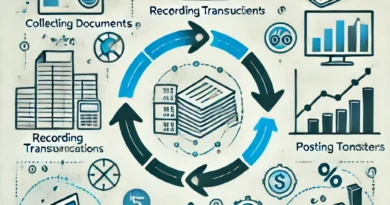Creating a Financial Roadmap for Your Startup: The Importance of a Chart of Accounts
Every successful business relies on a solid financial structure, and for startups, setting up a well-organized accounting system early on is crucial. One of the foundational elements of this system is the Chart of Accounts (COA)—a structured list of accounts that helps categorize every transaction. Whether it’s tracking income, expenses, or liabilities, the COA serves as your financial roadmap, ensuring that your financial data is accurate and easy to analyze.
What is a Chart of Accounts?
A Chart of Accounts is essentially a categorized list of all the financial accounts used by your startup. Each account is assigned a unique number or code, making it easier to record and retrieve financial information. These accounts are organized under major categories like assets, liabilities, equity, income, and expenses. The structure and depth of the chart will vary depending on the size and complexity of your business, but even small startups benefit from establishing one early.
The Key Components of a Chart of Accounts
Your COA is divided into five main categories:
- Assets: This section tracks what your business owns, such as cash, equipment, inventory, and receivables.
- Liabilities: These are your business’s obligations, like loans or outstanding payments to suppliers.
- Equity: This reflects the ownership interest in the company. It includes initial investments, retained earnings, and any withdrawals made by the owners.
- Income: Also known as revenue accounts, this section records all money earned by the business, such as sales revenue or interest income.
- Expenses: This tracks all outgoing costs related to running the business, including salaries, rent, marketing expenses, and utilities.
Why a Chart of Accounts Matters for Startups
For a startup, having a well-structured COA is essential for tracking where your money comes from and where it’s going. It helps you categorize transactions, simplifying everything from tax preparation to financial reporting. A clear COA not only helps your accountant work more efficiently, but it also gives you greater control and insight into your financial health.
Startups that fail to implement an organized COA early on often face difficulties down the road, especially when it comes to managing cash flow, analyzing profitability, or preparing for audits. By setting up a tailored COA, you can make smarter financial decisions and avoid common pitfalls that derail many new businesses.
Connecting Your Chart of Accounts to Financial Statements
Your COA serves as the foundation for generating financial statements such as the income statement, balance sheet, and cash flow statement. These reports give you and your stakeholders a clear view of your company’s financial status. Every time a transaction is recorded, it is categorized according to your COA, and over time, these transactions are compiled into useful reports.
- Income Statement: Tracks revenue and expenses, giving you insight into your company’s profitability.
- Balance Sheet: Provides a snapshot of your assets, liabilities, and equity at a specific point in time.
- Cash Flow Statement: Shows how cash moves in and out of your business, crucial for managing liquidity.
Setting Up Your Chart of Accounts
The process of setting up a COA may vary based on your industry, but there are a few universal tips to follow:
- Keep It Simple: Avoid over-complicating your COA with too many accounts. Stick to broad categories and only add sub-accounts when necessary.
- Use Consistent Numbering: Assign a range of numbers to each category for easy reference. For example, assets might be numbered from 1000 to 1999, liabilities from 2000 to 2999, and so on.
- Think Long-Term: Set up a COA that can grow with your business. It’s better to have a structure in place that allows for scalability rather than constantly reworking your accounts as your business expands.
Debits and Credits: A Quick Overview
In double-entry accounting, every transaction affects at least two accounts—one account is debited and another is credited. Debits and credits must always balance out. For example, if you take out a loan, you would debit your cash account and credit your liabilities account. The COA helps track these transactions systematically, ensuring your books are balanced.
Final Thoughts
A well-organized Chart of Accounts is the cornerstone of an efficient accounting system. It provides the framework that helps your startup categorize transactions, create financial reports, and make informed decisions. By setting up your COA early, you can ensure that your financial management stays on track as your business grows.
#ChartOfAccounts #StartupFinance #BusinessAccounting #FinancialOrganization #COABasics #ProBizInsights #SmallBusinessFinance #StartupGrowth #AccountingTips #BusinessPlanning




